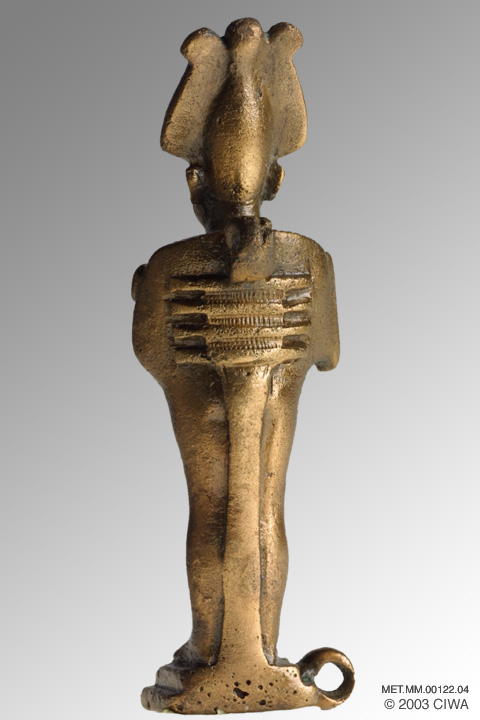I doubt very much this will be your last response on this thread, since you've already said you were done in your previous post. But I do intend to make this my last response. So call it my the definitive statement. Afterward I will not respond, reply, or engage with you on this forum again.
Now, moving on.
Fair enough. But I have never said that it was. My contention has been that it was visually enhanced version of an amulet that is shown in their book. I don't have a problem with such tactics, provided the author(s) show the original and explicitly state what they are doing. Freke and Gandy do do the former, but neglect the latter. If you have a problem with that, then I will tell that that is a trivial issue to get so up in arms about.1. The image provided by Ethan (page one of this thread) titled, Orpheus Bacchus, is not real. It comes from a book cover, "The Jesus Mysteries".
2. The picture on the book cover is not an actual photo of a tangible item like an amulet but a computerized cartoon enhanced image to make it look like it is real. Much like the cover of a romance novel.
No. It is modeled from the amulet shown in their book. But you don't have to be a publisher to know that that image, which is in black and white, would not be as eye-catching. In fact, and this is speculation, it was probably their publisher that persuaded Freke and Gandy to use this version. Scholastic integrity is one thing, but if your goal is to sell books then you need to take every opportunity that you can.
Stuff and nonsense. Considering the overtly religious implications presented in the image, I can only imagine the only companies who would do this would be those who directly sell to churches.3. The cartoon is not based on a real amulet but most likely a logo/seal of a wine jug. Meaning it had no religious function like a Saint Christopher medal but rather like a trade logo stamped/sealed on a jug for easy identification of the company that made the wine.
But then you would have to explain why the caption reads ORPHEOS BAKKIKOS., meaning Orpheus becomes Bacchus, and why they bothered to imprint it in Ancient Greek?
Really, you have made the quantum leap into pure imagination, and may have left reality as we know it with this comment.
That's a blatant lie. It's such comments that lead me to believe you're either so unconscionably disingenuous that you're unable to accept when you're wrong, or you are knowingly and deliberately being dishonest.4. The writing on the cartoon is not the same as the wine seal in the book.
Here is the image from the cover of Freke and Gandy's book that Ethan first posted:
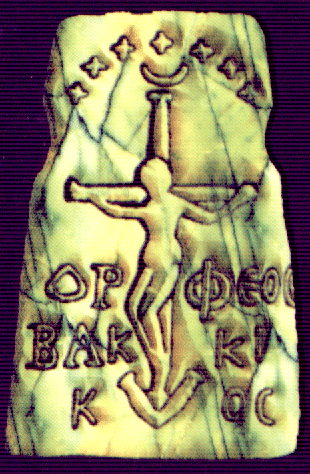
And here is the image of the amulet Freke and Gandy provide in their book:
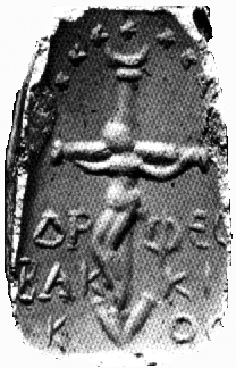
And just for the sake of being thorough, here are the two images side by side:
The writing on both the original and the visually enhanced version used by Freke and Gandy are one hundred percent a match.
But surely there are better arguments for dismissing it than merely saying that the most popular version of the image is a tampered copy? It's like flatearthers who jump on the opportunity to dismiss the spherical shape of the earth when NASA comes out and states that they routinely enhance their photographs of the earth to make it more aesthetically pleasing.5. The item in the book is no longer available for scholars to verify the authenticity and/or age.
Just for a quick history of this object, here is a brief rundown...
This is the original object:
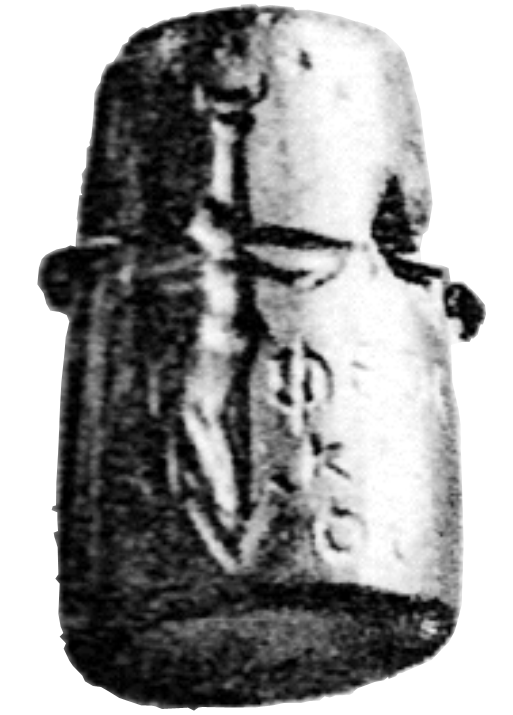
Here is a mould that the above object was pressed in when it was donated to the Kaiser Friedrich Museum:

Here is the image that appears in Freke and Gandy's book, which is the image in the mould, as can be discerned from the two chucks on either side that the original cylinder left:
And lastly, the image that appears on the cover of Freke and Gandy's book:
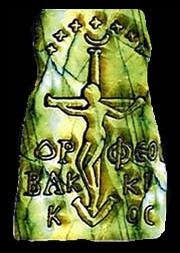
Besides the colouration, there is nothing amiss with the final image and the second. The image on it remains the same, the lettering is the same, and it even retains the bell shape of the mould.
So really, you have nothing--nothing at all--on Freke and Gandy, other than some poultry tripe about them colouring the object.
And for that, you have wasted my time, your time, and everyone's time, with your nonsensical blabberings that boarder on the psychotic.
A really meaningless and patronizing statement. I think I've made my views on the historicity of Jesus--that he can be better understood as Lukuas Andreas--quite known on this forum. So I can't be considered a mythicist in its extreme definition. But I still remain sceptical of the history of Christianity and the historical reliability of the Gospels.Now, if you can arrogantly dismiss the evidence of deception with the cover of the book how can I possibly convince you of all the errors inside the mythcist book?
A mythicist is going to believe what a mythicist wants to believe or should I say what they want you to believe?
However, I can recognize general themes and motifs at play within the Jesus tale that existed in much older religions. Even early Christians admitted that shared motifs existed between Christians and pagans, going back so far as St. Paul himself.
It's clear that Christianity is the product of a much more broader synthesis of Jewish and Hellenistic thought and religious expression. But so to were the cults of Dionysus and Sabazios. And early Christians prided themselves on being deeply indebted to pagan philosophies, going so far as to honour them as fellow Christians.
I sincerely doubt that this will be your final--or second final--leave of this thread as your ego will not allow you to accept such a unassailable refutation of your arguments. And if Ehrman's book is where you have received your knowledge of mythicism, then I truly pity you you.With that, I am done with this thread but for those that want to learn more about the hoax of the mythicist movement I suggest you read (for starters) Bart Ehrman's book, "Did Jesus Exist?".
But, for everyone else, I hope you enjoyed the show.

